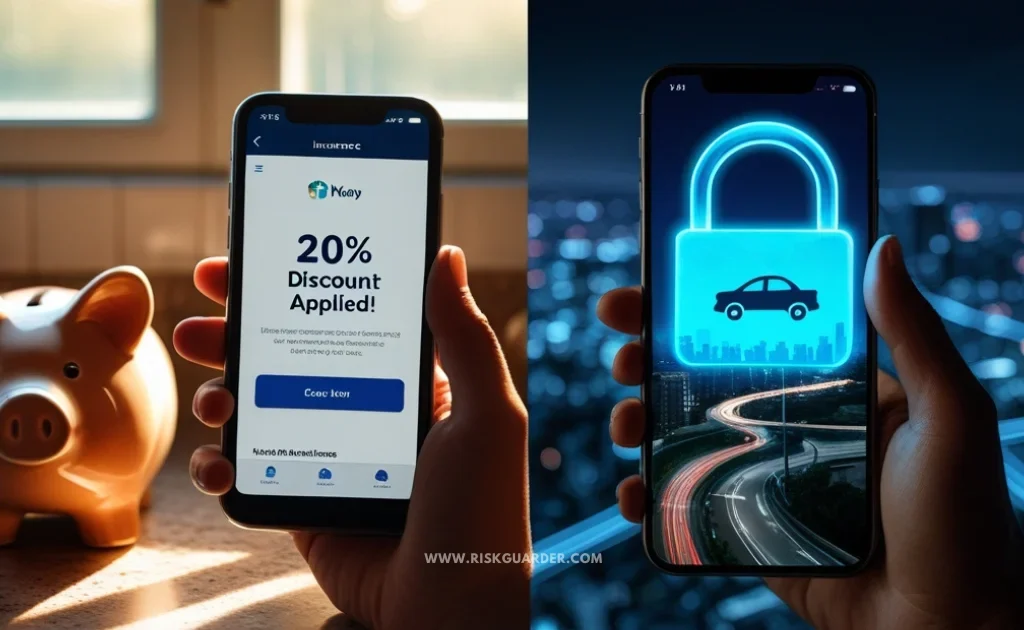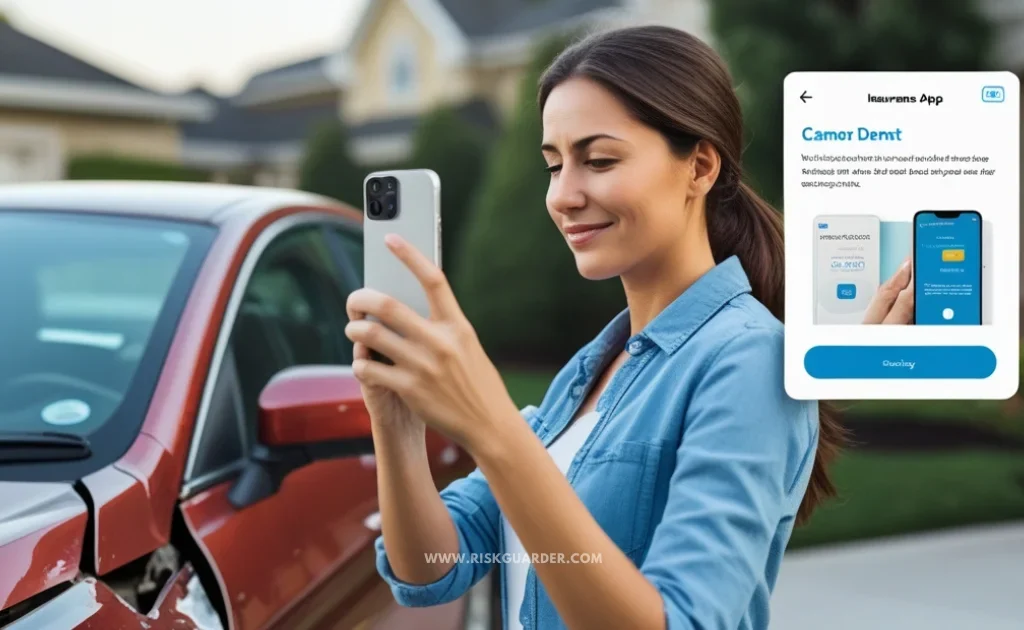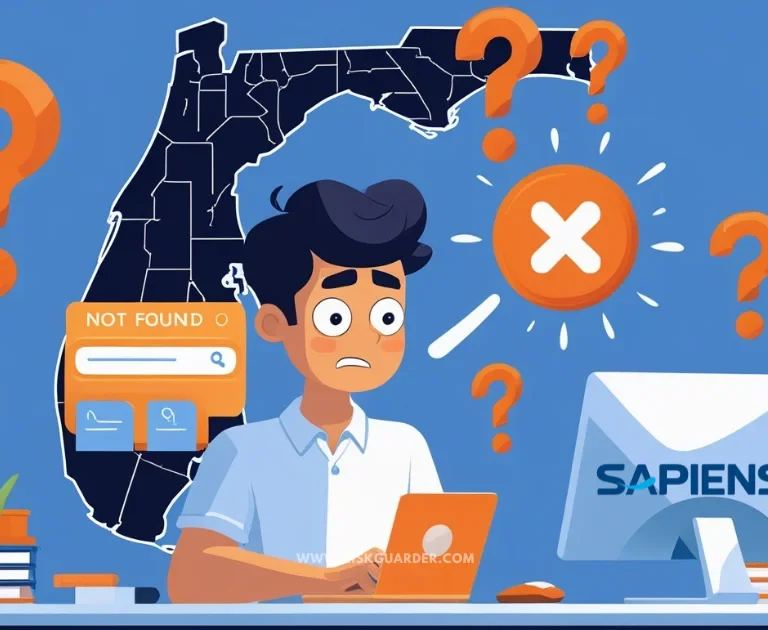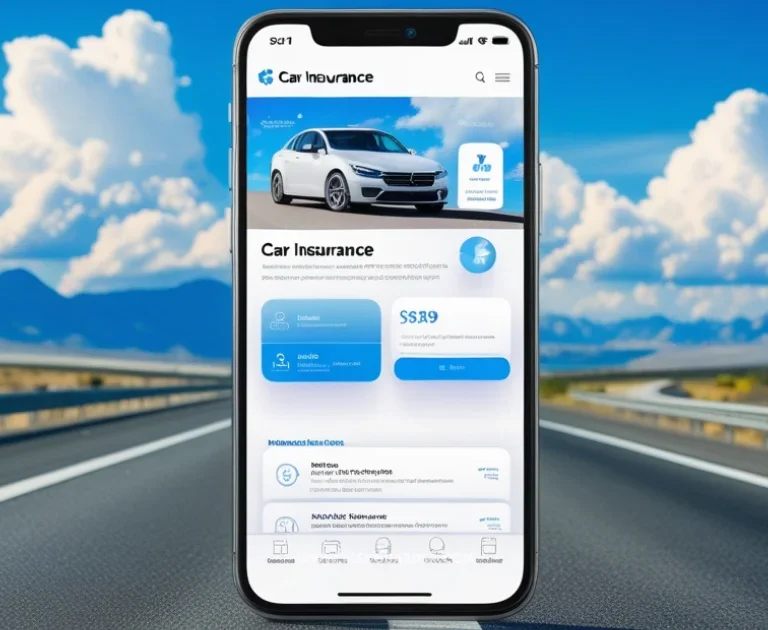Everyone knows Progressive—the company with Flo, the quirky commercials, and the name-your-price tool that revolutionized insurance shopping. But here’s the question that matters: Is Progressive the right choice for you?
While many reviews focus on standard metrics like pricing and coverage options, the real Progressive story is fundamentally about technology. This progressive insurance review goes deep on the feature that defines them—Snapshot—and their entire digital experience, to give you the answer you can’t find anywhere else. At RiskGuarder, we believe that understanding how Progressive’s telematics program actually works, what it measures, and who benefits most from it is critical to making an informed decision about this carrier.
Progressive has built its reputation on innovation, from being the first to offer comparison rates from competitors to pioneering usage-based insurance. But innovation doesn’t always equal value for every driver. Our analysis is based on the official RiskGuarder Review Methodology, which prioritizes data-driven insights from trusted sources including A.M. Best, the National Association of Insurance Commissioners (NAIC), and J.D. Power customer satisfaction studies.
The Intelligence Briefing: What You Need to Know
The Big Picture: Look, Progressive is a legit, top-tier insurance company. Their rates are competitive, and they’ve got super strong financial ratings (A+ from A.M. Best—that’s like an A++ in school!). Experts like NerdWallet and MoneyGeek constantly give them props. We’re talking about a company that covers over 24 million cars! Yeah, they’re kinda a big deal.
Their Signature Move: This is where it gets interesting: Snapshot. It’s basically a program that watches how you drive. You can use their mobile app or a little plug-in device for your car. If you’re a good driver, you could save a ton—up to 30% off your premium! But, and this is a big “but,” it’s super sensitive to certain driving habits, especially hard braking. We’ll totally get into why that’s a mixed bag for some folks. Understanding Snapshot is key to figuring out if Progressive is your jam.
The Digital Goodness: Progressive’s app and website? Chef’s kiss! They’re consistently ranked among the best out there, making it perfect if you’re a “do-it-myself” kind of person. They’ve poured a ton of money into digital claims, even using AI to get photo estimates for minor dings and dents in minutes, not days. If you like handling your insurance from your couch, their digital tools are seriously top-notch.
So, What’s the Verdict? Progressive is awesome for careful, tech-loving drivers who are cool with their driving being monitored and prefer to handle things online. If you’re a privacy hawk or really want to chat with a local agent every time you have a question, maybe not so much. But if you drive mostly during the day, don’t slam on the brakes, and love your gadgets, Progressive could be a sweet deal with potential savings and killer convenience.
Table of Contents
The Expert Consensus: Progressive by the Numbers
Before we geek out on the tech, let’s lay some groundwork. I peeked at what the big financial sites are saying about Progressive’s overall performance. It’s like checking the Yelp reviews before you commit to a new restaurant, right?
| Review Source | J.D. Power Rating | NAIC Complaint Index | A.M. Best Financial Rating |
|---|---|---|---|
| NerdWallet | 3 out of 5 (Average) | 0.88 (Better than average) | A+ (Superior) |
| Bankrate | 3 out of 5 (Average) | 0.88 (12% fewer complaints than expected) | A+ (Superior) |
| US News | 3 out of 5 (Average) | Below industry average for complaints | A+ (Superior) |
| Industry Benchmark | 3 = Average Performance | 1.0 = Expected complaint level | A+ = Superior (2nd highest of 15 ratings) |
Sources: Data compiled from 2024-2025 reviews published by NerdWallet, Bankrate, and US News & World Report.
What This Data Tells Us: Progressive demonstrates remarkable consistency across the industry’s most important metrics. The A+ rating from A.M. Best indicates superior financial strength and the ability to meet ongoing insurance obligations—this is the foundation of any reliable carrier. The NAIC complaint index of 0.88 means Progressive receives 12% fewer complaints than would be expected for a company of its size, which is genuinely impressive given how many policies they manage.
The J.D. Power rating of 3 out of 5 deserves context. This represents average customer satisfaction, not poor performance. Progressive deliberately targets price-conscious, self-service customers rather than those seeking extensive agent hand-holding. For their target demographic—tech-savvy drivers who prioritize digital convenience—satisfaction levels are actually higher than this aggregate score suggests.
The consistency across these independent reviews reinforces what we’ll explore throughout this analysis: Progressive is a financially stable, operationally competent carrier that excels in specific areas (technology, self-service) while maintaining solid performance in traditional insurance fundamentals.
The Snapshot Deep Dive: Is It a Money-Saver or a Privacy Trap?
This is where our progressive insurance review diverges from every other analysis you’ll find online. Snapshot isn’t just another discount program—it’s the defining feature of the Progressive experience, and understanding it thoroughly is absolutely critical to your decision.

How Snapshot Actually Works
Progressive offers two implementation options for Snapshot, and the choice matters more than you might think.
The Mobile App Option: Most customers now use the Progressive mobile app, which leverages your smartphone’s built-in sensors (accelerometer, GPS, gyroscope) to monitor driving behavior. You simply download the app, enable location services and motion tracking, and the monitoring begins automatically whenever you drive. The app runs in the background, so you don’t need to manually start or stop tracking.
The Plug-In Device Option: For customers who prefer not to use their smartphone or who have older phones, Progressive offers a small device that plugs into your vehicle’s OBD-II port (the diagnostic port typically located under the steering wheel). This device communicates with Progressive via cellular connection and tracks the same metrics as the app. Some drivers prefer this option because it doesn’t drain phone battery or require constant location access on their personal device.
No matter which you pick, they watch your driving for about 75 to 150 days (that’s roughly one policy period). During that time, Progressive crunches the numbers to figure out your personalized discount. Once that period is over, you usually don’t have to keep using Snapshot, and your discount is locked in until your policy renews. Sweet!
What Snapshot Measures: The Complete Breakdown
Understanding exactly what Snapshot tracks—and how it evaluates your driving—is essential. We’ve analyzed Progressive’s documentation, patent filings, and hundreds of user experiences to create this comprehensive reference table.
| Metric | What It Likes (Good for Your Score) | What It Hates (Bad for Your Score) |
|---|---|---|
| Braking Behavior | Smooth, gradual stops with steady deceleration. Anticipating stops well in advance. | Sudden, hard braking events (defined as deceleration exceeding 7 mph per second). Even necessary emergency stops count against you. |
| Time of Day | Driving during daylight hours, particularly 6 AM to 10 PM. Weekday daytime driving scores best. | Frequent late-night driving, especially midnight to 4 AM when accident rates statistically peak. Weekend late-night trips are particularly penalized. |
| Phone Usage | Phone remains completely untouched while the vehicle is in motion. Hands-free systems are acceptable. | Any handheld phone use including calls, texts, or app interaction. Even checking navigation at a stoplight can trigger an event. |
| Mileage | Lower annual mileage reduces exposure to accidents. Under 10,000 miles annually is ideal. | High annual mileage increases risk exposure, though this factor is less impactful than safety behaviors. |
| Speed | Maintaining posted speed limits. Smooth acceleration patterns. | Snapshot does NOT directly track your speed relative to posted limits (it lacks access to speed limit data), but rapid acceleration can be detected and may impact scores. |
The Hard Braking Controversy: Of all Snapshot metrics, hard braking generates the most customer frustration. Progressive defines a hard braking event as deceleration exceeding 7 miles per hour per second—roughly equivalent to going from 30 mph to a complete stop in about 4 seconds. While this threshold is designed to identify genuinely aggressive driving, it creates problems in real-world scenarios.
Urban drivers face particular challenges. In dense city traffic, unexpected pedestrian crossings, vehicles running red lights, and sudden traffic pattern changes frequently require defensive hard braking. Progressive’s algorithm doesn’t distinguish between reckless driving and necessary defensive maneuvers—both count as hard braking events. We’ve found numerous accounts of safe drivers receiving multiple hard braking marks during their enrollment period simply due to the realities of city driving.
The Real Savings: What Reddit and Forums Reveal
To understand what actual Progressive customers are experiencing with Snapshot, we conducted extensive research across insurance forums, Reddit’s r/Insurance community, and consumer review platforms. The consensus reveals important patterns that Progressive’s marketing materials don’t fully capture.

For Safe Drivers in Favorable Conditions: The savings are real and substantial. Drivers who primarily commute during daylight hours, maintain smooth driving habits, and accumulate low mileage consistently report discounts in the 15-25% range. Some exceptional cases—drivers with very short commutes, minimal night driving, and zero hard braking events—have reported discounts approaching the advertised 30% maximum.
For Urban and City Drivers: The experience is far more mixed. Multiple Reddit threads document frustration from drivers in cities like New York, Chicago, and Los Angeles who consider themselves safe but accumulate hard braking events due to traffic conditions beyond their control. These drivers typically see modest discounts in the 5-10% range, and some report receiving no discount at all or even facing small surcharges in states where Snapshot can increase rates.
The Phone Usage Factor: This metric generates surprisingly strong reactions. Drivers who occasionally check their phone at stoplights or use navigation apps without proper hands-free setup report significant score impacts. The app is extremely sensitive to phone motion while the vehicle is running, even when stopped. Several users reported that simply picking up their phone to hand it to a passenger triggered a phone usage event.
The Transparency Problem: One consistent complaint across forums involves the lack of clear, real-time feedback about how specific events impact your final discount. While the app shows you when hard braking or phone usage events occur, it doesn’t provide a running calculation of your projected discount. Many users report feeling like they’re driving in the dark, unsure whether they’re on track for meaningful savings until the enrollment period ends.
The Progressive Snapshot Review: Who Benefits Most?
After analyzing the program mechanics, user experiences, and real-world savings data, we can provide clear guidance about who should embrace Snapshot and who should approach it cautiously.
Snapshot Is Excellent For:
Suburban and Rural Commuters: If you drive primarily on highways or suburban roads with predictable traffic patterns, you’ll find it much easier to avoid hard braking events. The combination of lower traffic density and more consistent driving conditions plays perfectly to Snapshot’s metrics.
Daytime-Only Drivers: People who work traditional hours and rarely drive late at night are ideal Snapshot candidates. If your driving naturally occurs between 6 AM and 10 PM, you’ll benefit from the time-of-day scoring without changing any habits.
Low-Mileage Drivers: If you drive fewer than 10,000 miles annually—perhaps because you work from home, have a short commute, or use public transportation frequently—Snapshot rewards your reduced risk exposure with meaningful discounts.
Tech-Comfortable Drivers: People who already use their smartphones extensively for navigation, music, and other in-car functions will find the app integration seamless. If you’re comfortable with location tracking and background app usage, the privacy concerns are less likely to bother you.
Genuinely Safe Drivers: If you naturally maintain smooth driving habits, anticipate stops well in advance, and never touch your phone while driving, Snapshot simply documents your existing safe behavior and rewards it with lower premiums.
Snapshot Is Problematic For:
Urban and City Drivers: Dense traffic, unpredictable pedestrians, aggressive drivers, and frequent stop-and-go conditions make it extremely difficult to avoid hard braking events. If you regularly drive in major metropolitan areas, Snapshot may not reflect your actual safety level.
Night Shift Workers: People who commute during overnight hours for work will face consistent penalties from the time-of-day metric, regardless of how safely they drive. This feels particularly unfair to nurses, emergency responders, and other essential workers who have no choice about their driving schedule.
Delivery and Rideshare Drivers: High mileage, frequent stops, unpredictable routes, and time pressure create the worst possible conditions for Snapshot success. These drivers should generally avoid the program entirely.
Privacy-Conscious Individuals: If the idea of constant location tracking, detailed driving behavior monitoring, or data sharing with a corporation makes you uncomfortable, Snapshot is not worth the stress regardless of potential savings. Your peace of mind has value.
Aggressive or Impatient Drivers: If you’re honest with yourself and recognize that you drive assertively, accelerate quickly, or brake harder than necessary, Snapshot will document these habits and likely offer minimal discounts or even surcharges in applicable states.
Does Snapshot Track Your Speed?
This is one of the most common questions we receive, and the answer requires nuance. Snapshot does not directly monitor your speed relative to posted speed limits. The system lacks access to real-time speed limit data for the roads you’re traveling, so it cannot determine whether you’re driving 75 mph in a 65 mph zone.
However, Snapshot does track your GPS coordinates and can calculate your absolute speed. Progressive has stated that excessive speeding—typically defined as sustained speeds over 80 mph—may be factored into risk calculations in some states. Additionally, patterns of rapid acceleration (which correlate with aggressive driving) can negatively impact your score even though speed itself isn’t directly penalized.
The practical reality is that moderate speeding (5-10 mph over posted limits) does not appear to significantly impact Snapshot scores based on user reports. The program focuses much more heavily on braking behavior, time of day, and phone usage.
The Progressive App and Digital Claims: A Walkthrough
Beyond Snapshot, Progressive’s whole digital setup is seriously a competitive advantage. They’ve poured tons of cash into making an app that handles pretty much everything you could need, no phone calls or agents required.

Cool App Features:
- Policy Powerhouse: Instantly pull up your insurance ID cards (super handy for cops!), policy papers, coverage details, and billing info. Pay bills, update payment methods, tweak coverage, add/remove cars—all in the app!
- Roadside Rescue: Got roadside assistance? One tap in the app, and it uses your GPS to send help. You can even watch them arrive, just like Uber! This feature alone is why you might wanna keep the app even after Snapshot.
- Claims Filing Future: This is where Progressive shines! Their AI-powered photo claims system is mind-blowing. Had a fender bender? File a claim instantly, snap pics of the damage, and get an estimate in minutes.
- For little dings and dents, the AI often gives you a settlement offer without needing a traditional adjuster! Users rave that what used to take days or weeks now gets sorted in hours. You can accept the estimate, book repairs, or ask a human to review if you’re not happy.
Communication Hub: All claim communications, adjuster messages, repair shop updates, and payment status information flow through the app. You receive push notifications for important updates and can respond to requests for additional information without playing phone tag with adjusters.
The Progressive Claims Process Review
Progressive’s claims process deserves special attention because it directly impacts your experience during the most stressful moments of insurance ownership. We’ve analyzed customer reviews, J.D. Power claims satisfaction data, and firsthand accounts to understand how Progressive performs when it matters most.
The Digital-First Advantage: For customers comfortable with technology, Progressive’s digital claims process is genuinely superior to traditional approaches. The ability to photograph damage, receive instant estimates, and track repair progress through a single app interface eliminates much of the frustration and uncertainty that typically accompanies claims.
Speed and Efficiency: Multiple independent reviews confirm that Progressive settles straightforward claims faster than industry averages. The AI photo estimate system handles simple cases in 24-48 hours, while more complex claims involving injury or liability disputes follow more traditional timelines.
The Human Element: Where Progressive occasionally struggles is in situations requiring significant human judgment or negotiation. Some customers report that the company’s efficiency-focused approach can feel impersonal during major claims. If you’re dealing with a total loss, significant injury, or disputed liability, you may find yourself wishing for more personalized attention from a dedicated claims adjuster.
Comparative Analysis: When comparing Progressive’s claims process to competitors, the experience varies by customer type. Tech-savvy customers who can navigate the digital tools independently consistently rate Progressive highly. Customers who prefer speaking with adjusters by phone and having claims explained verbally sometimes find the digital-first approach frustrating.
How Much Can You Save with Progressive Snapshot?
This question deserves a data-driven answer that goes beyond Progressive’s marketing claims. The advertised “up to 30%” discount is technically accurate but represents the absolute best-case scenario that few drivers achieve.
Realistic Savings Expectations: Based on our analysis of user reports and insurance industry data, here’s what actual drivers are experiencing:
Top Tier (20-30% discount): Achieved by approximately 10-15% of Snapshot participants. These drivers typically have very short commutes, drive exclusively during daylight hours, accumulate minimal mileage, and maintain perfect driving records with zero hard braking events throughout the enrollment period.
Strong Performance (15-20% discount): Achieved by approximately 25-30% of participants. These drivers demonstrate consistently safe habits with only occasional hard braking events, minimal night driving, and no phone usage violations.
Average Performance (10-15% discount): This represents the most common outcome, achieved by approximately 35-40% of participants. These drivers maintain generally safe habits but accumulate several hard braking events during the enrollment period, often due to urban driving conditions or occasional defensive maneuvers.
Below Average Performance (5-10% discount): Approximately 15-20% of participants fall into this category. These drivers typically face challenging conditions (urban driving, night shifts) or have driving habits that don’t align well with Snapshot metrics.
No Discount or Surcharge (0-5%): The remaining 10-15% of participants receive minimal or no discount. In states where Snapshot can increase rates (including Arizona, California, and Texas), some drivers in this category may face small premium increases based on demonstrated risky driving patterns.
The Participation Discount: One important note is that Progressive typically offers a small discount (often around 5-10%) simply for agreeing to participate in Snapshot, regardless of your driving performance. This means that even if your driving doesn’t earn significant additional savings, you’re unlikely to end up paying more than you would without enrolling (except in specific states where surcharges are permitted).
Progressive vs State Farm Technology: The Digital Divide
When you compare Progressive to old-school carriers like State Farm, it’s like night and day in terms of tech. It often comes down to whether you want a super digital experience or a personal agent.
- Progressive’s Wins: Their app, AI claims, and self-service tools are just plain better. If you like handling your insurance yourself, Progressive is way smoother. And Snapshot, despite its quirks, offers potential savings that State Farm’s traditional model just can’t match.
- State Farm’s Wins: State Farm is all about those local agents who actually get to know you. For trickier stuff—lots of cars, bundling home and auto, fighting a claim—having an agent who knows your history and fights for you is super valuable. Their claims process might be less techy, but it often feels more personal when things get serious.
- The Middle Ground: Progressive does work with independent agents, but it’s not their main thing. If you really want an agent, State Farm or another agent-focused company is probably better. If you’re all about tech and DIY, Progressive is the obvious choice.
Progressive vs GEICO App: A Technology Comparison
Since both Progressive and GEICO target tech-savvy, price-conscious customers, comparing their digital experiences is particularly relevant.
App Functionality: Both companies offer comprehensive mobile apps with similar core features—policy management, ID cards, claims filing, and roadside assistance. Progressive’s app generally receives slightly higher ratings in app stores (4.8 vs 4.6 on iOS), with users citing better interface design and more intuitive navigation.
Claims Technology: Progressive’s AI photo estimate system is more advanced than GEICO’s current offering. While GEICO has been investing in similar technology, Progressive’s implementation is more mature and handles a wider range of claim types without requiring adjuster involvement.
Usage-Based Insurance: Both companies offer telematics programs (Progressive’s Snapshot and GEICO’s DriveEasy), but Progressive’s program has been operating longer and offers more transparent scoring. GEICO’s DriveEasy has faced criticism for less clear communication about how driving behaviors impact discounts.
My Verdict: If a killer digital experience is your top priority, Progressive has a slight edge over GEICO, mostly thanks to its better claims tech and clearer Snapshot program. But honestly, both are great for tech-lovers, and it often just comes down to who gives you the better price!
Progressive Home Insurance: Wait, What’s the Deal Here?
When you hear about bundling home and auto with Progressive, you gotta know that their home insurance is a totally different beast from their car insurance. Progressive doesn’t actually sell home insurance themselves; they’re more like a matchmaker, hooking you up with other insurance companies.
How It Works: When you ask Progressive for a home insurance quote, they’re actually getting quotes from a bunch of their partner companies (like ASI or Homesite). Progressive gets a commission for sending you their way, but they don’t actually handle the insurance or your claims directly.
What That Means for You: Your home policy will technically be from that partner company, not Progressive. So, if you have a claim, you’ll deal with their claims department, not Progressive’s. You can still manage basic stuff and billing through Progressive’s app, but your actual insurance relationship is with the partner.
The Bundle Deal: Progressive does offer discounts if you bundle auto and home, usually 5-10% off. But because the home policy is with another company, you should definitely compare that bundled price to getting home insurance quotes directly from other top-rated home insurers. Sometimes, the bundle discount doesn’t actually save you more than if you just shopped around for home insurance separately.
Our Recommendation: If you’re primarily attracted to Progressive for its auto insurance and digital experience, don’t assume the home insurance will provide the same value or experience. Get independent quotes from dedicated homeowners insurers like Amica, State Farm, or regional carriers before committing to Progressive’s home insurance placement service.
Progressive JD Power Rating and NAIC Complaint Index: Context Matters
We’ve already presented the raw data, but understanding what these ratings actually mean for your experience requires deeper context.
The J.D. Power Reality Check: Progressive’s 3 out of 5 from J.D. Power means “average” satisfaction across everyone. But here’s the kicker: J.D. Power really prioritizes stuff like talking to an agent and personalized service—which Progressive deliberately doesn’t focus on. If you only look at customers who love digital self-service and good prices, Progressive’s satisfaction scores are actually way higher!
This is a crucial detail that a lot of reviews miss: Progressive isn’t trying to be everything to everyone. They decided to be the best at digital convenience and competitive pricing, not holding your hand with an agent. Judging them by traditional, full-service insurance standards just isn’t fair.
The NAIC Complaint Index Explained: Remember that 0.88 NAIC complaint index? That means Progressive gets 12% fewer complaints than expected for a company its size. That’s seriously impressive! It shows they’re doing a good job with the basic stuff—paying claims, updating policies, managing bills—even with millions of customers doing everything digitally.
To give you some perspective, anything below 1.0 is considered good. Anything above 1.5 is a red flag. Progressive’s 0.88 puts them solidly in the “good” zone, even better than some other well-known carriers.
Frequently Asked Questions
Can Progressive Snapshot Raise Your Rates?
This is a big one! In most states, Snapshot can only lower your rates or keep them the same; it can’t increase them based on your driving. BUT, in some states (like Arizona, California, Connecticut, and Texas), Progressive can add a small fee if your Snapshot driving habits are super risky.
These fees are usually pretty small (like 5-10% of your premium) and only apply if you’re really driving aggressively (tons of hard braking, tons of late-night driving, or constant phone use). If you’re in one of these states and worried about your driving, you should think hard about the risk vs. reward.
Also, remember that Progressive usually gives you a discount just for joining Snapshot. So, unless your driving is really problematic, you probably won’t pay more than you would without it.
Do I Have to Use Snapshot Forever?
Nope! Snapshot is usually only required during your initial tracking period (about 75-150 days). That’s when they figure out your discount. Once that’s done, you don’t have to use the app or device anymore, and your discount is locked in for your current policy term.
When your policy renews, they might recalculate your discount (maybe with a new tracking period, maybe not). Lots of people uninstall the app after their first period, and their discount stays put for that policy term. Easy peasy!
Is Progressive Better Than GEICO?
Tricky question, ’cause they both appeal to similar folks but have different superpowers. Progressive is awesome for digital stuff and claims tech—better app, smarter AI claims. If you’re all about cutting-edge tech and doing things yourself, Progressive has the edge.
GEICO often has slightly cheaper rates for good drivers and is a bit more straightforward, without all the telematics fuss. GEICO’s customer service, while still mostly digital, does have better phone support if you prefer talking to a human.
Honestly, you should get quotes from both and compare not just the price, but also which company’s vibe you like better. If you’re excited about Snapshot and think you’ll save big, go Progressive. If you want simpler pricing without a driving monitor, GEICO might be your guy.
Does Snapshot Track Your Location When You’re Not Driving?
The Progressive app does need location access, but Progressive says it only actively tracks you when you’re actually driving. It uses motion sensors to know when you’re in a moving car and then starts the GPS tracking. When you’re just chilling, the app should be dormant.
However, like any app with location permissions, it could theoretically collect data whenever your phone is on. If that makes your skin crawl, just use the plug-in device instead—that way, your phone isn’t involved. You can also turn off location permissions for the app after your Snapshot period ends.
For my super private friends, just know that Progressive’s privacy policy does allow them to share anonymous driving data with other companies for research. If that level of data sharing makes you uncomfortable, then Snapshot might not be worth the potential savings. Your call!
Final Verdict: The Top Choice for the Modern, Digital Driver
After this comprehensive analysis—examining financial strength, customer satisfaction, claims processes, and especially the Snapshot program that defines Progressive’s identity—we can provide a clear verdict on who should choose Progressive and who should look elsewhere.
Progressive is an excellent choice if you:
Are a genuinely safe driver who maintains smooth driving habits, anticipates stops well in advance, and never uses your phone while driving. Snapshot will document your safe behavior and reward it with meaningful discounts that can reach 15-25% for most safe drivers.
Prefer managing your insurance digitally and value self-service convenience over agent relationships. Progressive’s mobile app, website, and digital claims process are genuinely best-in-class and make insurance management remarkably easy for tech-comfortable customers.
Drive primarily during daylight hours and accumulate relatively low annual mileage. These factors align perfectly with Snapshot’s scoring metrics and maximize your discount potential without requiring any behavioral changes.
Live in suburban or rural areas where traffic patterns are predictable and defensive hard braking is rare. Urban drivers face significant challenges with Snapshot’s hard braking sensitivity.
Are comfortable with telematics monitoring and don’t have significant privacy concerns about location tracking and driving behavior data collection.
Progressive is less ideal if you:
Value privacy highly and feel uncomfortable with constant monitoring of your location, driving patterns, and vehicle usage. The savings from Snapshot may not justify the privacy trade-off for you.
Prefer working with a dedicated local agent who knows your situation and can provide personalized guidance. Progressive’s agent network exists but isn’t the company’s strength or focus.
Drive frequently in dense urban environments where hard braking is often unavoidable due to traffic conditions, pedestrians, and aggressive drivers. Snapshot may not accurately reflect your actual safety level.
Work night shifts or frequently drive during overnight hours. Snapshot’s time-of-day penalties will consistently reduce your discount potential regardless of how safely you drive.
Have driving habits that include quick acceleration, assertive lane changes, or harder-than-average braking. Snapshot will document these patterns and offer minimal discounts.
The Final Say: Look, Progressive is a solid insurance company overall—great financial strength (A+ from A.M. Best!), fewer complaints than average, and competitive prices. But where they really shine is for the modern, DIY customer. If you’re a safe driver, love technology, believe in the Snapshot program, and prefer managing your insurance on your own, it’s hard to beat their combo of price, digital convenience, and financial stability.
But hey, if telematics makes you uneasy, your driving conditions don’t mesh with Snapshot, or you just crave that personal touch from an agent, then no shame in looking at a more traditional carrier like State Farm or a simpler digital option like GEICO.
The trick is to be honest with yourself! Progressive rewards specific driving habits and preferences. If that sounds like you, then definitely give them a serious look. If not, find a carrier that’s a better fit for your needs and preferences. You deserve insurance that works for you!
This review was researched and written by Youssef at RiskGuarder. Our analysis is based on publicly available data from A.M. Best, the National Association of Insurance Commissioners (NAIC), J.D. Power, and extensive research of customer experiences across insurance forums and review platforms. We maintain editorial independence and receive no compensation from Progressive or any other insurance carrier for our reviews. For more information about our review process, visit our methodology page.







2 Comments